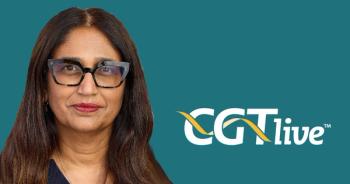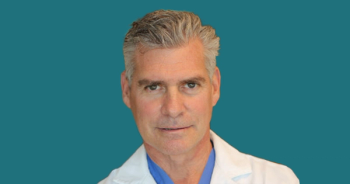
Navigating the New Landscape of Care for DMD
John Brandsema, MD, a pediatric neurologist in the Division of Neurology at Children’s Hospital of Philadelphia, discussed the complicated choice doctors, patients, and families now face with a wide range of treatment options available.
This is the second part of an interview with John Brandsema, MD. For the first part,
The FDA's approval of Sarepta Therapeutics' gene therapy product delandistrogene moxeparvovec-rokl (marketed as Elevidys) for patients with Duchenne muscular dystrophy (DMD) has added another layer to the complex deicison that patients and families need to make when seeking treatment. As such, many are looking to their doctors and other support networks for guidance.
CGTLive® spoke with John Brandsema, MD, a pediatric neurologist in the Division of Neurology at Children’s Hospital of Philadelphia, about his view on how doctors should guide this families through the decision-making process for DMD. Brandsema emphasized the need to balance a staggered using with combination treatments to monitor for safety events with the desire to try as many things as possible before disease progression occurs.
CGTLive: How has the experience been of integrating Elevidys into clinical practice so far?
John Brandsema, MD: One aspect of the approval that made things slightly more manageable for clinical teams was that the original approval was for a restricted age range. We had just 4 and 5 year olds being treated, and so the volume of patients to be treated was low. We've now expanded that significantly with the broad label and so all of us are coming up with protocols on how to do this both fairly for patients to have access as soon as possible if they're interested, but also safely. We want to make sure that we're not overwhelming our teams or our other resources like the ICU or hospitalization if it's needed or other things for these rare safety events by attempting to dose too many people at the same time and having complications arise. The good news is that the majority of children do get through their dosing quite well and do not need these extra resources, but for the ones who do, it can be quite resource intensive and a very significant burden on both the family, of course, but also the provider teams in terms of addressing the side effect that's seen and navigating through that.
We're hopeful that we'll be able to offer this treatment within a reasonable time period to every family that we know that may be eligible at our center—and the interesting thing is that not every family is interested in this therapy right now—but the ones who are do want access as soon as possible, because there's an appreciation that this is a neurodegenerative disease, that we're losing muscle week by week, month by month, and year by year in Duchenne, and so we want to try to get ahead of it as much as possible. As such, that is our goal, to do that as efficiently as we can, but do it the right way.
Going forward, how should doctors help patients and families choose the right treatment option for DMD?
Because we've had so many approvals in such a short period of time, the landscape is exciting, but also a bit muddied at this time in terms of understanding what exactly the right thing to do is. We don't understand how these different treatment approaches may work in combination, or whether there are unique safety issues to think about in that context. This is all real-world experience that we're gaining through our clinical care and so while we all attempt to do careful monitoring of both efficacy and safety in our patients to make sure that we're making the right decisions for their care, we really do need to be rapid in terms of disseminating information as a community—if there's a new effect that's seen or a new concern that arises—so that we can all learn from each other. The therapies are not all universally available to all patients with their insurance coverage in this country, which is another issue. If you receive gene transfer with Elevidys, for example, would we continue exon skipping for those who are eligible for it? There's a scientific argument for me why that might be valid, but that may not be approved by the third-party payer of that patient. The new muscle-focused treatments as well, givinostat and vamorolone are approved based on a small cohort of patients in a restricted age range, and their use across the the lifespan of Duchenne is not clear yet either.
So the challenge that we have is that most providers don't want to make 2 changes at the same time in somebody's care because then if something changes, either in terms of their efficacy, their experience of the disease, or a side effect, you don't know which of the 2 things that you did is the problem, or whether it's the combination. As such, we're trying to negotiate with our families a little bit in the clinic about doing a staggered approach of 1 and then the other and then the other, if multiple changes are possible for their child or for the person themselves, if they're old enough to participate in the discussion. But the challenge is, of course, that when you're facing neurodegenerative disease, you don't have patience. You want to do everything you can as soon as possible. So while scientifically, we may want to do [things staggered] because it makes the data clearer in terms of interpreting what's going on and making clinical decisions, we don't have that ability in terms of the discussion with our families and what's right for them in this moment in time.
So we're all just trying to have the most rational discussion we can and avoid things that we know for sure may be risky in terms of doing 2 things at once if they have clear overlap In terms of their side effects or tolerability, but otherwise, trying to ensure that families are informed of all of their options and are making decisions about what's right for their specific circumstance with our help.
This transcript has been edited for clarity.
Newsletter
Stay at the forefront of cutting-edge science with CGT—your direct line to expert insights, breakthrough data, and real-time coverage of the latest advancements in cell and gene therapy.











































